To clarify, the window.screen.availHeight reflects the maximum height the browser window, including all the toolbars, can have. If you look at the picture below, you see that 548 is just the height of the whole browser, without the iOS menubar. So, the availHeight property is not supposed to show the available space for the content, but the whole browser. It's used for desktop browsers, to detect things like the browser is maximized or not, by checking window.outerHeight against window.screen.availHeight.

But about getting the minimal UI height, right before getting into it. There's no standard property in the spec for it, as it's just a iOS only behavior. Apple could have put some non-standard properties to expose these information. But as I have checked the window and window.screen objects, there's nothing related. That's for the feasiblity, for now.
As a sidenote, what is the difference between knowing the new viewport size with resize event and knowing the would-be size in advance? The amount of work that can be done, prior to the resize event, should always be minimal, and if a layout change should happen, it should happen after the resize. So, knowing the numbers in advance, shouldn't help that much.
Consider this scenario that a user opens a webpage, and starts scrolling immediately. If we know the numbers before, there's nothing that we can do for the initial render of the screen, as it's not a minimal UI. Whatever that should be done, must begin rightaway after the user starts scrolling.
Now besides this, there's one other resize event that just looks like the minimal ui. On the iPad, when you have more than one tab, the height shrinks a bit more, to show the tabs. So, when the user closes the only other tab, the current page, gets a bit taller, and triggers a resize event too. But this new height is different from the height of the minimal UI. This suggests that this minimal ui, is just another boost in the height, not a Fullscreen-API-like mode.
So, if a page is dependent on the height, there's just too many possible changes to bear in mind. Hard-coding would be just a short-term solution, one day you won't be able to test all those devices.
But, I also should say that there's a downside to the resize event, it triggers after getting into the minimal ui, which may be too late. So, when the height starts to grow, there's no event to know about it. That's where I believe some custom fluid UIs may need to start an animation to change the sizes. In this case, to know about the beginning of this event, one may use an interval checking on the innerHeight, which will start to change immediately.
Anyway, if there is a necessary usecase for knowing the numbers beforehand any scrolling, I believe it's not available through the CSSOM, yet.
Edit:
Detecting minimal-ui is another thing, that still knowing the dimensions is not needed. Using Touch events, you can detect if the view has entered the minimal UI or not.
Checking the innerHeight in touchstart, touchmove and touchend events can help to detect the minimal ui. The naive approach is to check if at the end of the touch the innerHeight has increased or not. This will work for most of the cases, but it has a problem, if the user stops touching right in the middle of minimal-ui transition, we cannot be sure if we will enter the minimal UI. Checking against the last reported height by touchmove can help to check if we will revert to the default view.
Anyway, You may check the code below to see how it works. It has bugs and can be improved, but you'll get the idea. I didn't put it on codepen, as you couldn't scroll the entire page there.
<!doctype html>
<html>
<head>
<meta name="viewport" content="width=device-width; initial-scale=1.0; maximum-scale=1.0; user-scalable=no">
<style>
div {
position: fixed;
left: 10px;
}
#dd1 {
top: 10px;
}
#dd2 {
top:30px;
}
#dd3 {
top: 50px;
}
</style>
<body>
<div id="dd1">Start: <span id="d1"></span></div>
<div id="dd2">Move: <span id="d2"></span></div>
<div id="dd3">End: <span id="d3"></span></div>
<section style="position:relative;height:3000px;"></section>
<script>
var d1 = document.querySelector("#d1");
var d2 = document.querySelector("#d2");
var d3 = document.querySelector("#d3");
var start_height=window.innerHeight;
var cur_height;
var end_height;
var normal_state=true;
var entered_minimal_ui=false;
//window.addEventListener("touchstart", start_handler, false);
window.addEventListener("touchmove", move_handler, false);
window.addEventListener("touchend", end_handler, false);
document.ontouchstart = control_touching;
d1.textContent=start_height;
function move_handler() {
if(cur_height>start_height) {
// we *may* enter the minimal-ui, but it's not final yet
d2.textContent="I detected minimal-ui faster. (Current: "+cur_height+")";
normal_state=false;
}
cur_height=window.innerHeight;
}
function end_handler() {
end_height=window.innerHeight;
if(end_height>start_height && end_height>=cur_height) {
d3.textContent="Hello minimal-ui. (End: "+end_height+")";
normal_state=false;
entered_minimal_ui=true;
}
else if(!entered_minimal_ui) {
d3.textContent="We didn't enter minimal-ui. Reverting.";
normal_state=true;
}
}
function control_touching() {
document.ontouchstart = function(e){
if(normal_state) {
return true;
}
else // just for testing
e.preventDefault();
}
}
</script>
</body>
</html>
References:

